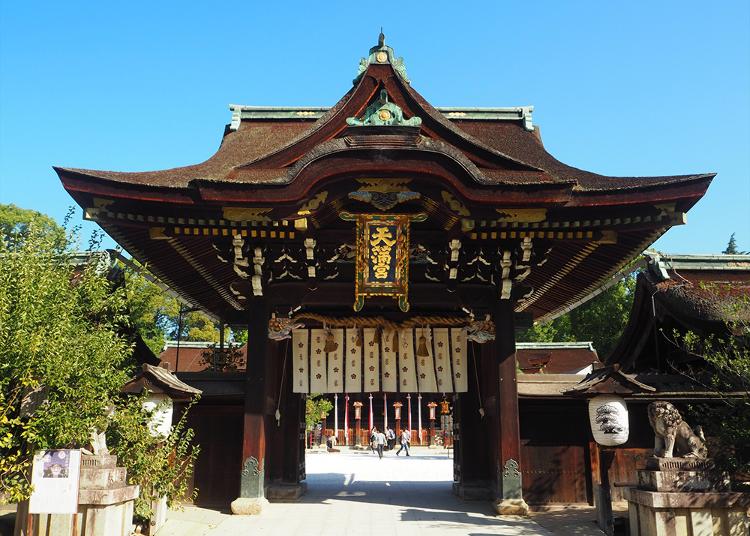
Here are the best Shrines in Kyoto, with travel tips and more, according to LIVE JAPAN, a top-class travel website for visitors to Japan. Our ranking is based on the most popular pages viewed by foreign visitors in a given category.
For instance, Fushimi Inari-taisha Shrine, Yasaka-jinja Shrine, Jishu-jinja Shrine and other related spots will be listed. Be sure to check them out during your visit to Kyoto!
1. Fushimi Inari-taisha Shrine
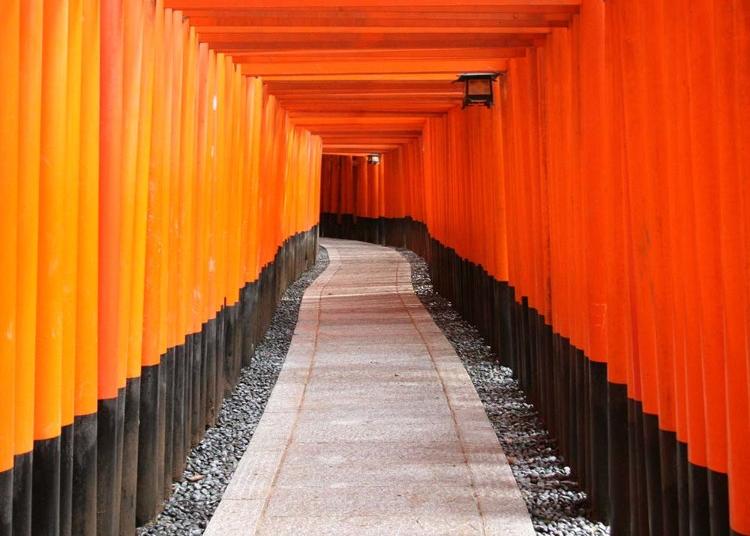
The classic red torii gates. Fushimi Inari-taisha Shrine lies on Mt. Inari, the southernmost mountain of the Higashiyama Sanju-Roppo (36-mountain range).
Founded in 711, it is the head shrine representing approximately 30,000 to 40,000 Inari shrines across Japan. Known affectionately as ”Oinari-san (Mr. Oinari),” the shrine's deity is widely worshipped as the god of good harvests, business success, industry growth, family safety, traffic safety, and success in the arts. In the grounds, you'll also find statues of foxes, which, legend has it, are Oinari-san's messengers.
The shrine's most striking drawcard is the Senbon Torii (1,000 vivid vermillion torii gates), attracting visitors from both inside and out. Scattered throughout the vast grounds, covering about 870,000 square meters and taking in the entire mass of Mt. Inari, are many little shrines called otsuka. Venturing out beyond the 1,000 torii gates and Okusha Hohaisho, you'll discover a 4-km forest trail called ”Oyama Meguri” lined with many otsuka.
Senbon Torii, famous as a photogenic spot
When thinking of Fushimi Inari-taisha Shrine, the iconic 1,000 torii gates will immediately spring to mind. These beautiful vermillion torii gates line the pathway from the main shrine all the way to Okusha Hohaisho. The great number of torii gates comes from a tradition dating back to the Edo period, when it was a custom to dedicate a torii gate in gratitude for a wish that came true spread among the people. Apparently, there are actually about 10,000 torii gates across the mountain.
Messengers of the deity Inari, white foxes await visitors
White foxes are believed to be the messengers of the deity Inari. Throughout the grounds you'll find statues of seated foxes. A pair of fox statues that have ”A-un” (inspiration and expiration) relationship stand in front of the Ro-mon gate.
The Omokaru-ishi Stone tells if a wish will come true
Behind the Senbon Torii lies Okusha Hohaisho (an inner shrine) generally known as ”Oku-no-in (inner sanctuary).” On the right side of Okusha Hohaisho, over which the Inarisan-sangamine Mountain towers, you'll find a pair of stone lanterns. Make a wish in front of one of the lanterns and pick up the kuurin (the top of the lantern). If the kuurin feels lighter than you expected, your wish will come true, and if it feels heavier than you expected, it is unlikely your wish will be granted. Known as the ”Omokaru-ishi Stone,” this sacred gem attracts many visitors.
Take the Oyama Meguri to learn about the history and feel the energy of the sacred mountain Inari
In the vast grounds of Fushimi Inari-taisha Shrine on Mt. Inari, you can join an Oyama Meguri walk where you hike the 4-km mountain trail. Unique otsuka (little shrines) such as Kumataka-sha, Mitsurugi-sha, Ganriki-sha, Ichi-no-mine, Ni-no-mine, and San-no-mine line the trail.
-
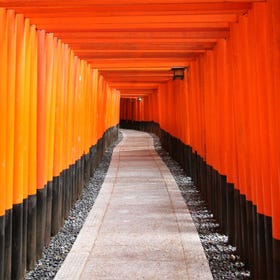
-
Address
68, Fukakusayabunouchicho, Fushimi-ku, Kyoto-shi, Kyoto, 612-0882
View Map -
Nearest Station
Inari Station (JR Nara Line)
- Phone Number 075-641-7331
-
Address
68, Fukakusayabunouchicho, Fushimi-ku, Kyoto-shi, Kyoto, 612-0882
2.Yasaka-jinja Shrine
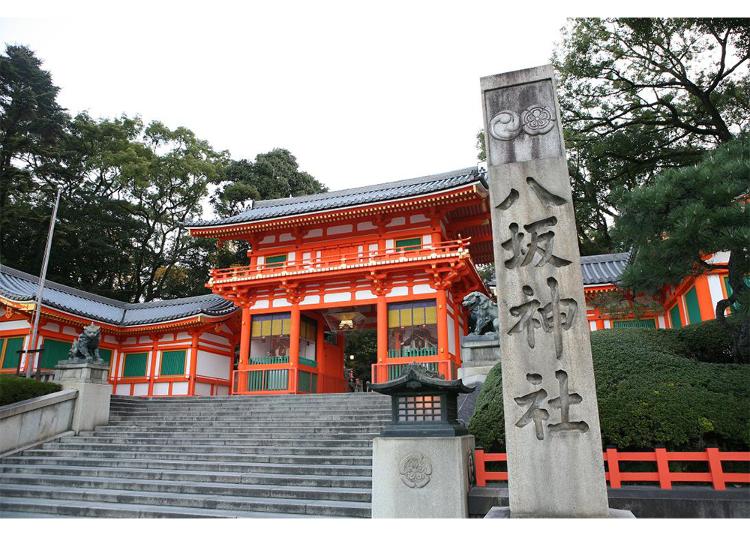
Yasaka-jinja Shrine sits at the east end of Shijo-dori, which is said to be Kyoto's main street. The Nishi-Ro-mon gate, which faces the Gion intersection, is a popular sightseeing spot among tourists. Yasaka-jinja Shrine pays homage to Susanoo-no-Mikoto and is the head shrine of all satellite shrines in Japan that honor the god. The name of the shrine was changed to Yasaka-jinja Shrine in 1868 when shrines and temples were separated, but it was originally called Gion-sha, so many people in Kyoto still call the shrine ”Gion-san.” The shrine hosts the annual Gion Festival, regarded as one of the three greatest festivals in Japan, and various Shinto rituals are held in the month of July.
・Gion Festival is known for its lively and festive musical rhythm known as konchikichin, honoring a long-standing tradition with a history of 1,150 years
Gion Festival dates back to a ritual called goryoe (prayers held to appease vengeful ghosts) held in 869 when Kyoto was hit by an epidemic. Today, it is regarded as one of the three greatest festivals in Japan and is also famous as one of Kyoto's largest festivals. Beginning with Kippu-iri (beginning of the festival) on July 1, various other rituals follow, such as Omukae Chochin (welcome lanterns) on the 10th, Yoiyama (small festival on the eve of the main festival) between the 14th and 16th, Yamahoko Junko (grand processions of floats) on the 17th, and the Yamahoko and Hanagasa Junko (flower hat procession) on the 24th. The sounds of a distinct musical rhythm known as konchikichin can be heard during these events throughout the Gion district. Some of the Gion Festival events are held by Yasaka-jinja Shrine, while others are held by each ward that possesses Yama floats or both Yama and Hoko floats.
・Okera-mairi held over New Year for people to bring home holy fire and wish for health and happiness
This New Year ritual is called Okera-mairi (Okera visit) and is held between December 31 and January 1. According to old traditions, the holy fire is lit inside Okera-toro (lanterns) on New Year's Eve and burnt all night along with Okera-gi (pieces of wood with inscriptions). Visitors use twisted bamboo ropes to transfer the fire and take it home with them. It is common to see visitors twirling their ropes to keep the flames alive during New Year in Kyoto.
・Utsukushi Gozen-sha Shrine is a popular site of worship among women who are praying for beauty. The beauty water is said to purify both body and mind...
There are many sessha (auxiliary shrines dedicated to a deity connected to that of the main shrine) and massha (small shrines belonging to the main shrine) within Yasaka-jinja Shrine, and Utsukushi Gozen-sha Shrine in particular is a very popular site of worship among women. This massha is dedicated to the three goddesses of Ichikishimahime-no-Mikoto, Takirihime-no-Mikoto, and Takitsuhime-no-Mikoto. As a shrine for wealth, performance art, and beauty, it is visited by many women including geiko and maiko from Gion. It is said that applying droplets of the beauty water trickling next to Utsukushi Gozen-sha Shrine will purify not only your skin, but also your heart.
-
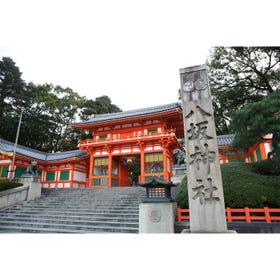
-
Address
625, Gionmachikitagawa, Higashiyama-ku, Kyoto-shi, Kyoto, 605-0073
View Map -
Nearest Station
Gionshijo Station (Keihan Line)
5 minutes on foot
- Phone Number 075-561-6155
-
Address
625, Gionmachikitagawa, Higashiyama-ku, Kyoto-shi, Kyoto, 605-0073
3.Jishu-jinja Shrine
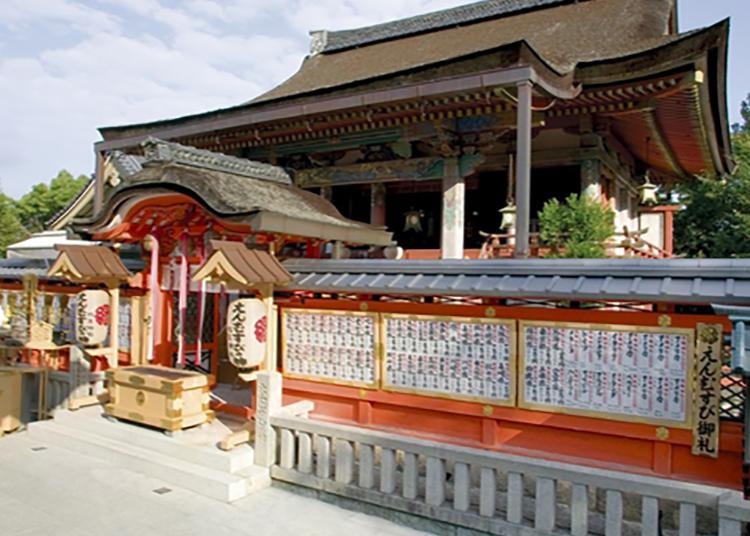
Located near the stage of Kiyomizu-dera Temple, Jishu-jinja Shrine is a historic shrine whose founding is thought to predate the founding of Japan itself. The shrine sits in the area known as Mt. Horai, which is worshipped as a sacred mountain of perpetual youth and longevity. This shrine was previously the guardian of Kiyomizu-dera Temple until the Edo period, and has drawn many worshippers of Ubusunagami (a guardian deity of one's birthplace) to Kiyomizu and Yasaka area since long ago. Enshrined as the main deity is Okuninushi-no-Mikoto, which attracts large numbers of visitors praying for marriage. The third Tokugawa Shogun, Iemitsu, built the current shrine structures in 1633, and these are embellished with beautiful patterns in a variety of colors. The entire grounds and the inner and outer shrine are registered UNESCO World Heritage sites as Historic Monuments of Ancient Kyoto.
Koiuranai-no-ishi—love fortune stones attracting countless visitors since the Edo period
Just off the path in front of the inner shrine rests a pair of guardian stones called ”Koiuranai-no-ishi (love fortune stones).” Tradition has it that if people can navigate between the stones, which are about ten meters apart, with their eyes closed, the shrine's god will grant their wish for love. Experts have recently identified that the stones, which have received visitors since the Edo period, are relics from the Jomon period.
Visit sacred places in the grounds that are believed to bring a good match or good luck
The grounds of Jishu-jinja Shrine contain many places believed to bring good match or good luck. These include Haraedo-sha, where you can purify the mind and body with haraigushi (wands used in Shinto rituals); a shrine to Nadedaikoku, where a different wish will be granted depending on the part of the statue of Daikoku that you stroke; a shrine with a gong for praying by sound, where if you ring the gong three times, the deity will give you a good match; a Buddhist statue called ”Mizukake Jizo” that is believed to bring good luck to those throwing water on it while making their wish; and a shrine with the deity Okage Myojin, that is said to grant any kind of wish one time only. If you're hoping to find a good match, why not pay a visit to those places?
Join the Enmusubi Kigan Sakura Festival to view the beautiful cherry blossoms that fascinated Emperor Saga
The cherry trees populating the grounds are called “Jishu-zakura,” and have long been a public favorite. This is a rare species that features branches with both single- and double-petal flowers. According to the traditional tale about when Emperor Saga visited the shrine in 811, he was so captivated by the exquisite beauty of the Jishu-zakura that he had his carriage turned around three times to view the flowers. As a result, the Jishu-zakura are also known as “Mikuruma-gaeshi-no-Sakura (cherry trees that coaxed the return of the imperial carriage).” The Enmusubi Kigan Sakura Festival takes place on the second Sunday of April every year to appreciate the beauty of cherry trees, celebrate the divine power of the deities, and pray that everyone will be blessed with a good relationship.
-
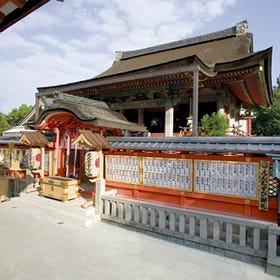
-
Address
1-317, Kiyomizu, Higashiyama-ku, Kyoto-shi, Kyoto, 605-0862
View Map -
Nearest Station
Gionshijo Station (Keihan Line)
25 minutes on foot
- Phone Number 075-541-2097
-
Address
1-317, Kiyomizu, Higashiyama-ku, Kyoto-shi, Kyoto, 605-0862
4.Kifune-jinja Shrine
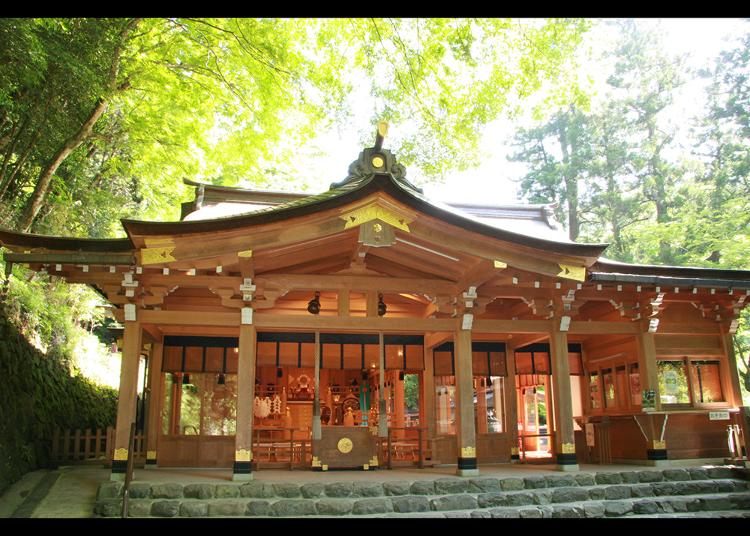
Straddling the border between Mt. Kibune and Mt. Kurama at the northern tip of the Rakuhoku district, it is believed that Kifune-jinja Shrine has been a place of worship since ancient times. But the exact date of its founding is unknown. Legend has it that the upper course of the Kibune River was worshipped as the shrine of kifune (yellow boat) around the time of the 18th Emperor Hanzei, about 1,600 years ago. The shrine is classified as a Myojin Taisha, or a shrine home to a deity known as Myojin, which some say has enacted some remarkable miracles since ancient times. The shrine's main sanctuary is divided into the Motomiya (main shrine), Yui no yashiro or Nakamiya (middle shrine) and Okumiya (rear shrine); the Motomiya and Okumiya are 700 meters apart. There is a way of worshipping called ”Sanshamairi,” where according to tradition if you visit the Motomiya, Nakamiya, and then Okumiya in that order, your wishes will come true. Also enshrined here is the spirit of water, Takaokami no kami, which has been worshipped since ancient times by people with jobs associated with water praying for rain. Many people also worship a god of marriage at Kifune-jinja Shrine.
Collect sacred water that springs from the stone wall
Springwater from Mt. Kibune gushes from the stone wall of the Motomiya. It is mildly alkaline natural water of good quality and drinkable. The water is free for you to take, just bring your own container. The water cools you down in summer and delivers a feeling of mystical warmth in winter. The shrine sells its original container that can hold 600 ml water.
Try some mystical hydromancy, popular with overseas visitors
Why not try some hydromancy at the Motomiya when visiting Kifune-jinja Shrine? Simply set an omikuji (paper slip with an invisible fortune written on it) on the waters of the spring, and characters will appear that spell out your fortune. The omikuji has a QR code that shows your result in either English, simplified Chinese, traditional Chinese, or Korean according to your device's settings. Since free Wi-Fi is available in the grounds, it's easy to casually enjoy some hydromancy.
A place brimming with sacred energy—Okumiya, the birthplace of Kifune-jinja Shrine
Kifune-jinja Shrine was founded at the location of the current Okumiya, which was previously treated as the Motomiya. The legend of Kifune-jinja Shrine says that when Tamayorihime-no-Mikoto travelled on a kifune (yellow boat) up the rivers, she found a sacred spring (fukii) where the current Okumiya stands. She then enshrined the deity of water at the place and named it ”Kifune no Miya (the shrine of Kifune).” The sacred spring is believed to be the current Ryuketsu (dragon cave), which lies below the main building of the Okumiya. Beside the main building is the Funagata-ishi (a boat-shaped stone) that is believed to have covered Kifune to keep it hidden from sight. A divine atmosphere surrounds the stone.
Yui no yashiro (Nakamiya) attracts people praying for marriage
Situated between the Motomiya and Okumiya, Yui no yashiro is known as a deity of marriage. A poet of the Heian period, Izumi Shikibu, visited the shrine to pray for reconciliation with her husband. Her wish was fulfilled. Look around the grounds for a monument inscribed with a poem by Izumi Shikibu.
-
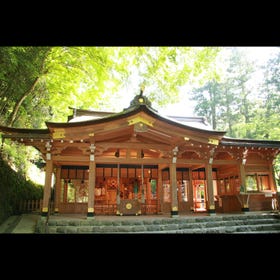
-
Address
180, Kuramakibunecho, Sakyo-ku, Kyoto-shi, Kyoto, 601-1112
View Map -
Nearest Station
Kibuneguchi Station (Eizan Dentetsu-kurama Line)
30 minutes on foot
- Phone Number 075-741-2016
-
Address
180, Kuramakibunecho, Sakyo-ku, Kyoto-shi, Kyoto, 601-1112
5.Kitano Tenman-gu Shrine
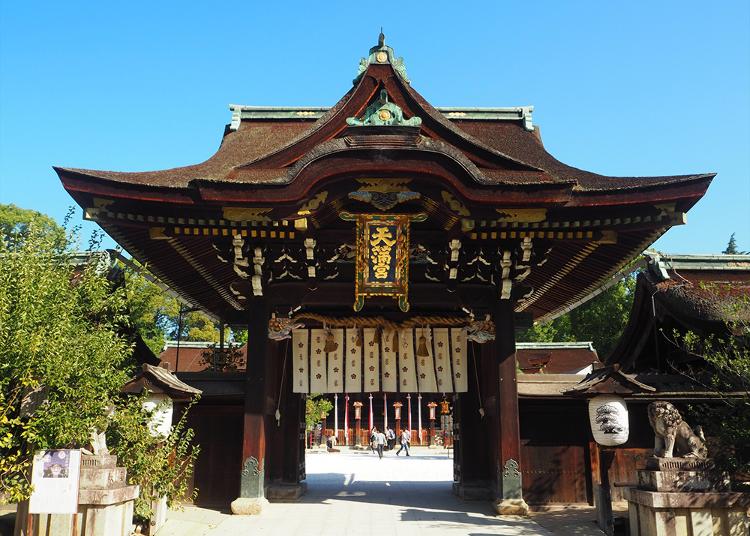
Kitano Tenman-gu Shrine is the head shrine of all the Tenman-gu shrines in Japan, and enshrines Sugawara no Michizane. Affectionally known as ”Kitano no Tenjin-san (Mr. Tenjin of Kitano),” its deity is worshipped as a god of learning. The shrine has a close connection with the Toyotomi family; its luxuriant main hall is of Momoyama architecture built by Hideyori Toyotomi in 1607. The honden (the main hall) and the haiden (a hall of worship) are connected by a low building called an ”Ishinoma.” This type of structure is known as ”Yatsumune-zukuri” and has been designated as a National Treasure owing to its importance as a structural remnant passing down the history of shrine architecture. On the 25th of every month, which is the birth and death anniversary day of Sugawara no Michizane, the Tenjin Market is held where the grounds liven up with lots of stalls crowded with people. The shrine is also famous as a popular viewing spot for plum blossoms and colorful maple leaves.
A plethora of cultural assets—including National Treasures—await in the treasure hall
Built in 1927, the treasure hall is home to a large number of art works or offerings such as ancient documents, swords, gold and silver lacquer works, folding screens, and tea utensils. Its collection includes the Kitano Tenjin Engi scroll painting (Jokyu-bon: Painted in the Jokyu period, early thirteenth century) (National Treasure), a painting of Kitano Oochano-yu (The Great Kitano Tea Gathering), the legendary tachi (long sword) Onikirimaru (otherwise known as Higekiri) (Important Cultural Property), and the tachi Kunihiro (Important Cultural Property) that was donated by Hideyori Toyotomi. Special-themed exhibitions are held each season along with the permanent collection on display year-round.
View varieties of plum blossoms at Kyoto's premier viewing spot
The shrine's grounds play host to 1,500 plum trees representing about 50 species, known for their Sugawara no Michizane connections. From early February to late March its plum garden is open to the public, making it a must if you're in Kyoto at the time. While you're there, visit a tea house to sample some green tea and Japanese confectionery. On February 25, which is the death anniversary of Sugawara no Michizane, the Baikasai (plum blossom festival) is held in a solemn atmosphere. Within the shrine grounds, the enormous outdoor tea ceremony is simultaneously held, where you can enjoy viewing plum blossoms together with tea and confectionery served by geisha (Japanese traditional female entertainer) and maiko (geisha apprentice) from Kamishichiken (the oldest geisha district in northwest Kyoto).
Beautiful autumn maple trees at the Momiji-en on Hideyoshi's Odoi designated as national historical sites
The western part of the shrine's grounds holds the remnants of Odoi, earthen fortification mounds built by Hideyoshi Toyotomi to protect Kyoto's urban area from flood waters. They have been designated as national historical sites. Surviving with a wealth of nature including a nearly 400 year-old tree, these historical remains have become the Momiji-en (autumn maple garden) where you can see around 350 maple trees. The garden is open to the public from late October to early December and illuminated at night from early November.
-
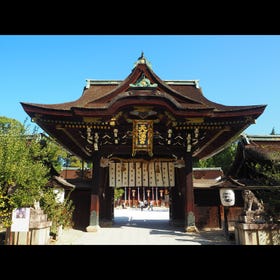
-
Address
Bakurocho, Kamigyo-ku, Kyoto-shi, Kyoto, 602-8386
View Map -
Nearest Station
Kitanohakubaicho Station (Keifuku Dentetsu-kitano Line)
5 minutes on foot
- Phone Number 075-461-0005
-
Address
Bakurocho, Kamigyo-ku, Kyoto-shi, Kyoto, 602-8386
6.Heian-jingu Shrine
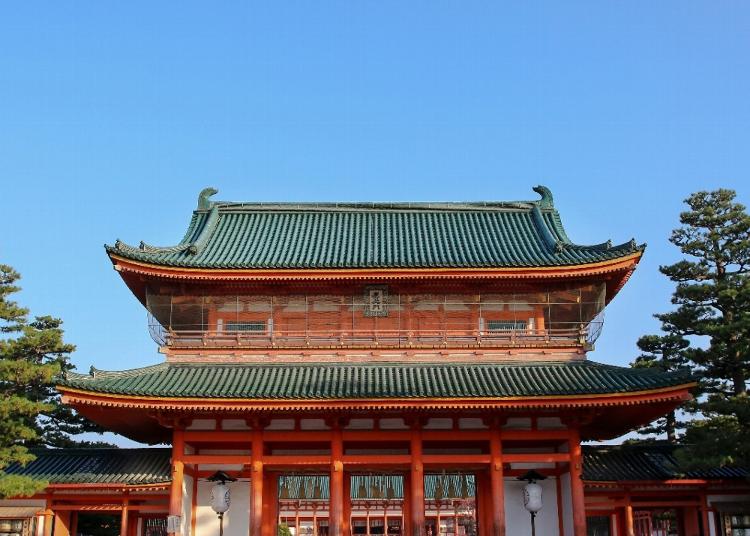
Heian-jingu Shrine was built in 1895 thanks to the yearning of Kyoto's citizens to restore a city devastated during the upheaval at the end of the Edo period. The shrine enshrined the 50th Emperor Tenmu, who relocated the capital to the Heian-kyo (ancient Kyoto). Commemorating 2,600 years of imperial succession in 1940, it also enshrined the 121st Emperor Komei, who was the last emperor to occupy the throne in Kyoto. The main building of Heian-jingu Shrine is a 5/8 scale reproduction of Chodo-in, a state chamber of Daidairi (place of the Imperial Palace and government offices) in Heian-kyo. In addition to the shrine, buildings such as Daigokuden, Outen-mon gate, Soryuro, Byakkoro, Tozai Horo, and Ryubidan, Shin-en Garden, which has been nationally designated as a place of scenic beauty, were built at the same time the shrine was founded. Heian-jingu Shrine and Shin-en Garden have received a star in the ”Michelin Green Guide Japon.”
Large vermillion torii gate towering over Jingu-michi
The grand torii gate in Jingu-michi, 300 meters south of the Outen-mon gate (the front gate of Heian-jingu Shrine), was built in 1929 to commemorate the enthronement of Emperor Showa. Being a registered national tangible cultural property and measuring 24.4 m high and 18 m wide, this torii gate is one of the largest in Japan. Its poles have a diameter of 3.63 meters.
Shin-en Garden, a place of scenic beauty with an atmosphere accented by water and seasonal flowers
Shin-en Garden is a Japanese garden constructed at the same time as Heian-jingu Shrine's founding, and has been designated as a national place of scenic beauty. Comprising the east, central, west, and south gardens that surround the main shrine building, the garden adopts the Chisen Kaiyu style (Japanese garden with a path around a central pond and fountain) and draws water from the Lake Biwa Canal. The garden covers a total area of approximately 33,000 square meters. A visit in any of the four seasons showcases its beauty: weeping cherry trees in spring, alluring irises in summer, fiery leaves in autumn, and snow scenery in winter.
Period Festival, a spectacular live picture scroll reflecting eight eras
The Period Festival, one of the three major festivals in Kyoto, is an annual event at Heian-jingu Shrine held on October 22. It is a parade divided into twenty sections representing eight eras: the Meiji Restoration, Edo, Azuchi-Momoyama, Muromachi, Yoshino, Kamakura, Fujiwara, and Enryaku. Approximately 2,000 people dressed in costumes from the eight eras form the parade that stretches about two kilometers.
-
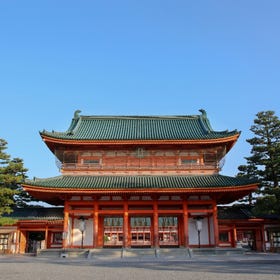
-
Address
97, Okazakinishitennoucho, Sakyo-ku, Kyoto-shi, Kyoto, 606-8341
View Map -
Nearest Station
Higashiyama Station (Tozai Line)
10 minutes on foot
- Phone Number 075-761-0221
-
Address
97, Okazakinishitennoucho, Sakyo-ku, Kyoto-shi, Kyoto, 606-8341
7.Toyokuni Shrine
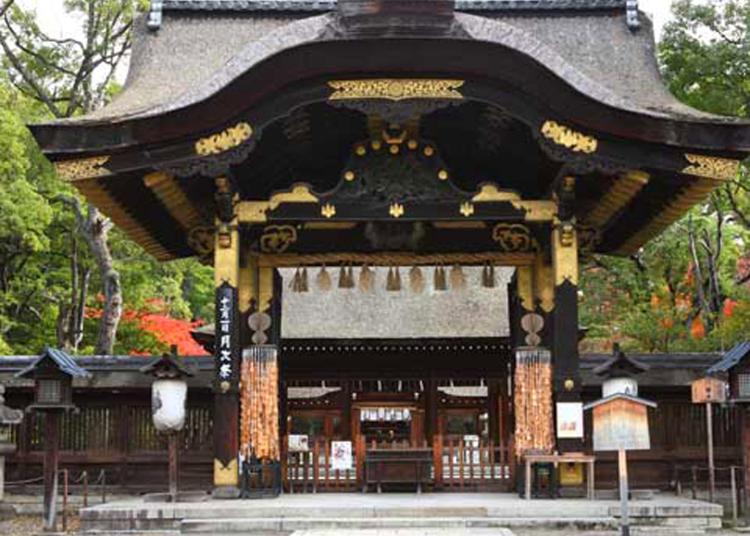
At Toyokuni Shrine, the main deity of worship is Hideyoshi Toyotomi. The shrine was originally located at Amidagamine Castle, but following the downfall of Hideyoshi, it was abandoned before being reconstructed at its current location in 1880. The shrine is in possession of various articles closely related to Hideyoshi.
-
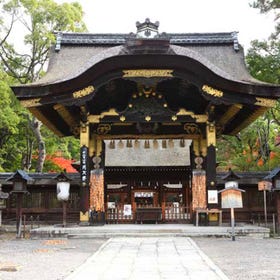
-
Address
530, Chayamachi, Yamatooji-dori shomen, Higashiyama-ku, Kyoto-shi, Kyoto, 605-0933
View Map -
Nearest Station
Shichijo Station (Keihan Line)
6 minutes on foot
- Phone Number 075-561-3802
-
Address
530, Chayamachi, Yamatooji-dori shomen, Higashiyama-ku, Kyoto-shi, Kyoto, 605-0933
8.Mikami Shrine
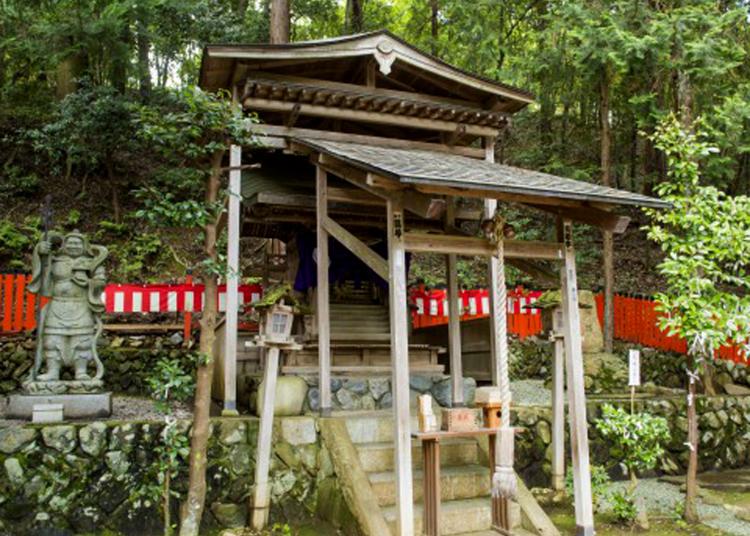
Mikami Shrine is the only shrine in Japan that protects hair. The shrine sees many visitors from beauty salons and those hoping to pass their national beautician examination. Their ema (votive tablet) and charms are designed in the shape of a comb.
-
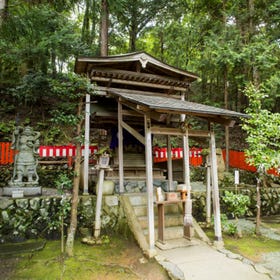
-
Address
Sagaogurayamatabuchiyamacho, Ukyo-ku, Kyoto-shi, Kyoto 10-2, 616-8394
View Map -
Nearest Station
Torokkoarashiyama Station (Sagano Sight-seeing Tram)
1 minute on foot
- Phone Number 075-882-9771
-
Address
Sagaogurayamatabuchiyamacho, Ukyo-ku, Kyoto-shi, Kyoto 10-2, 616-8394
*Prices and options mentioned are subject to change.
*Unless stated otherwise, all prices include tax.
Limited time offer: 10% discount coupons available now!
Recommended places for you
-
Appealing
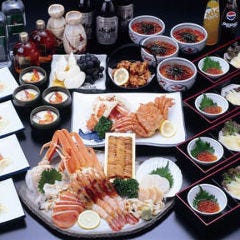
Rukku and Uohei
Izakaya
Sapporo / Chitose
-
Menu
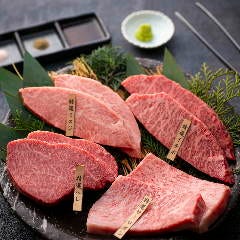
ISHIDAYA Hanare
Yakiniku
Kobe, Sannomiya, Kitano
-

Kamesushi Sohonten
Sushi
Umeda, Osaka Station, Kitashinchi
-

Jukuseiniku-to Namamottsuarera Nikubaru Italian Nikutaria Sannomiya
Izakaya
Kobe, Sannomiya, Kitano
-
Goods

Yoshida Gennojo-Roho Kyoto Buddhist Altars
Gift Shops
Nijo Castle, Kyoto Imperial Palace
-
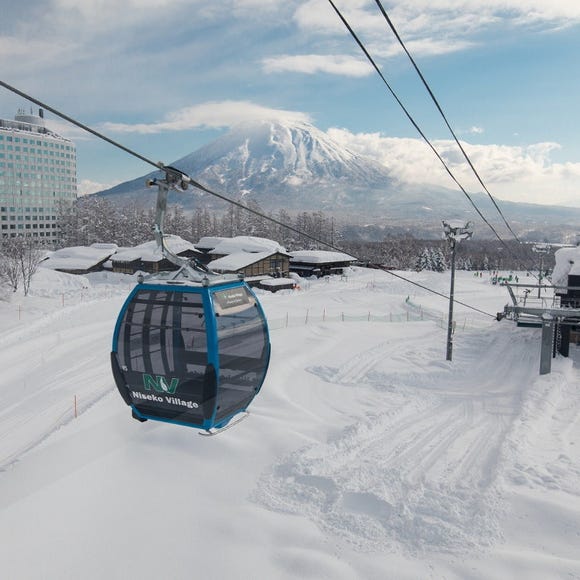
Niseko Village Ski Resort
Skiing & Snowboarding
Niseko / Rusutsu
-
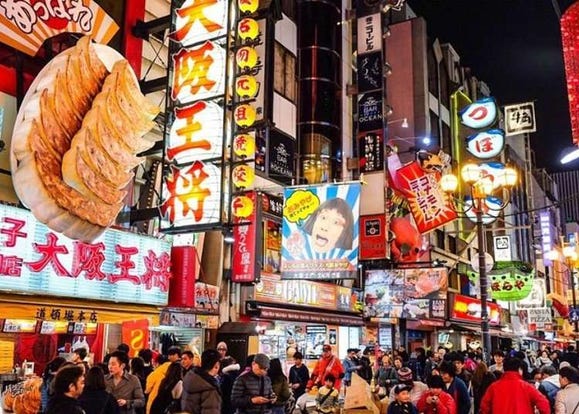
14 Unique & Fun Osaka Food Tours to Enjoy in 2024
-
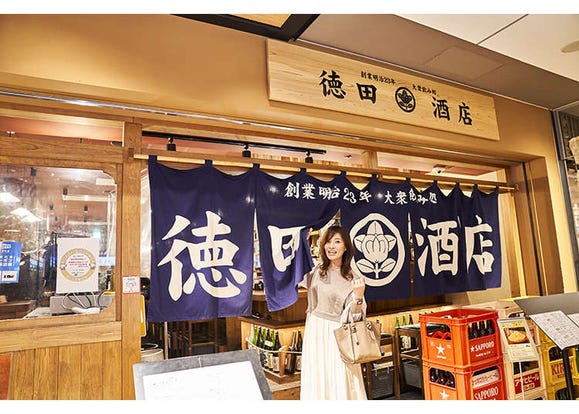
Enjoy the Enchanting World of Osaka Station City: Solo-Friendly Bar-Hopping!
-
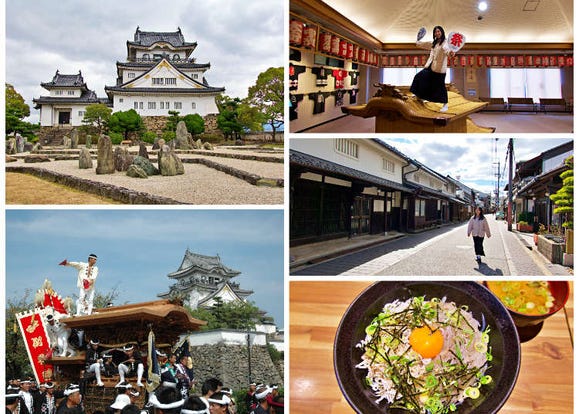
Sightseeing Guide to Kishiwada (Osaka): Danjiri Festival, Kishiwada Castle, and Other Fun Things to Do
-
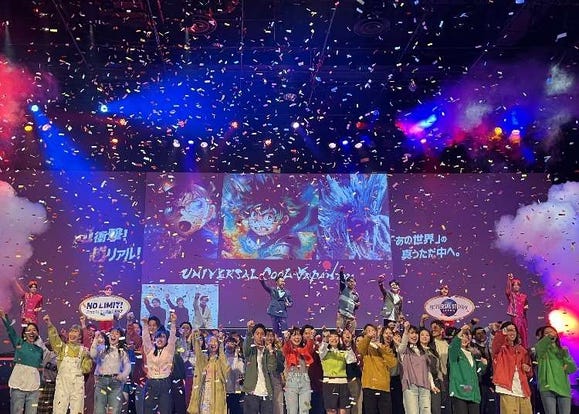
Make the Most of 'Universal Cool Japan' (2024 Guide) - Detective Conan, Monster Hunter & More
-

What Items Does a Japanese Stationery Lover Want Most? We Find Out with Taku Kidate!
-
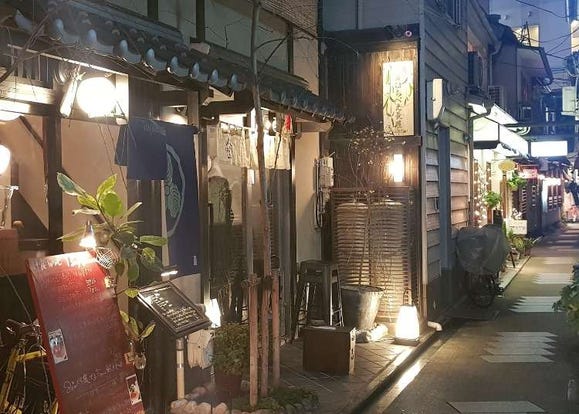
13 Unique & Fun Kyoto Food Tours to Enjoy in 2024
-

Exploring Sendai in the Footsteps of Samurai Date Masamune: Castle Ruins to VR Museums!
-
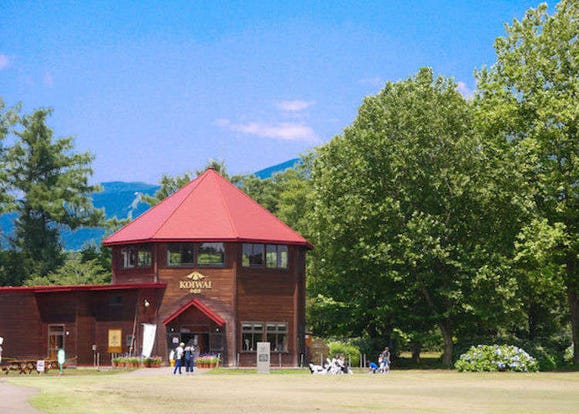
Koiwai Farm Guide: Eat, Learn and Play at Iwate Prefecture's Premier Agritourism Destination!
-
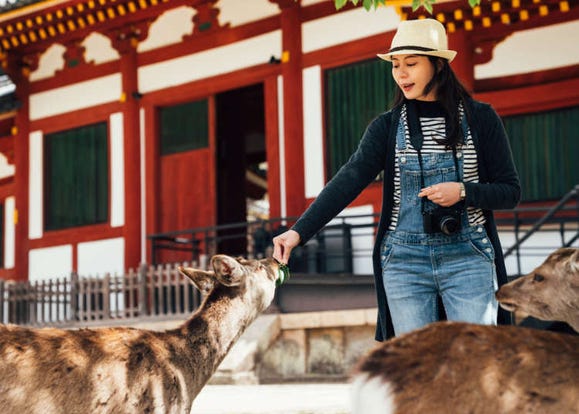
5 Must-Visit Nara Temples and Shrines: Discover the Timeless Beauty of Japan's Ancient Capital
-

5 Picturesque Floating Torii Gates in the Seas of Hokkaido
-
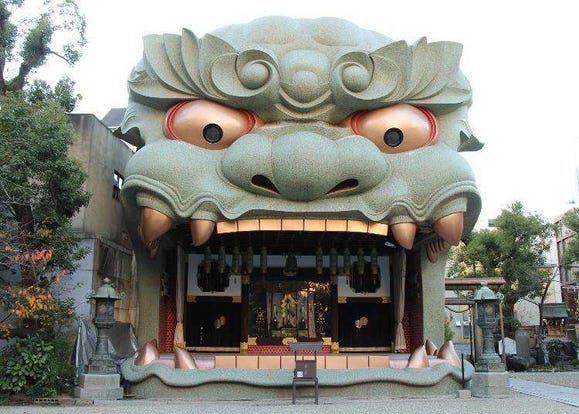
5 Unique Shrines and Temples in Osaka and Kobe for Your First Visit
-
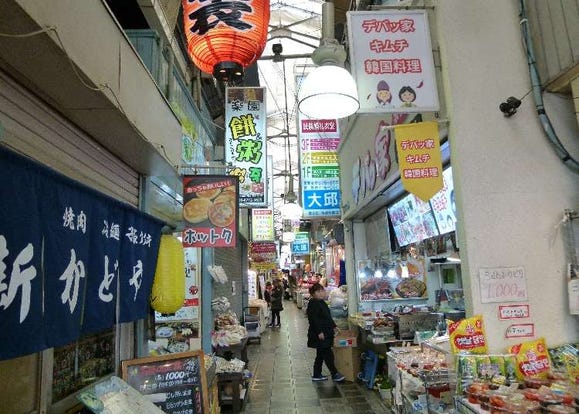
Osaka Koreatown: In Search of the Best Eats in the Korean Roots of Osaka's Tsuruhashi Market
- #best sushi japan
- #what to do in odaiba
- #what to bring to japan
- #new years in tokyo
- #best ramen japan
- #what to buy in ameyoko
- #japanese nail trends
- #things to do japan
- #onsen tattoo friendly tokyo
- #daiso
- #best coffee japan
- #best japanese soft drinks
- #best yakiniku japan
- #japanese fashion culture
- #japanese convenience store snacks
















